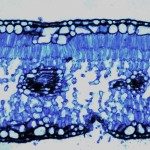Link to Pubmed [PMID] – 25128747
Int. J. Food Microbiol. 2014 Oct;189:75-81
Vibrio spp. have emerged as a serious threat to human health worldwide. Vibrio parahaemolyticus, Vibrio cholerae and Vibrio vulnificus are of particular concern as they have been linked to gastrointestinal infections and septicemia associated with the consumption of raw or undercooked seafood. We developed hydrolysis probe-based real-time PCR systems with an internal amplification control for the detection of these species. We applied these systems to a total of 167 fresh or frozen crustacean, fish and shellfish samples consumed in France. Of them, 34.7% (n=58) were positive for Vibrio. V. parahaemolyticus was the most common, in 31.1% of samples, followed by V. vulnificus in 12.6% and V. cholerae in 0.6%. Furthermore, V. parahaemolyticus and V. vulnificus were present simultaneously in 9.6% of samples. Virulence genes (tdh and trh sequences) were present in 25% of the V. parahaemolyticus-positive samples. The V. cholerae strain detected was non toxigenic. The densities of V. parahaemolyticus and V. cholerae ranged from <10(2) to 10(4)bacteria/g of seafood. All samples positive for V. vulnificus displayed low-level contamination with fewer than 10(2)bacteria/g. Our findings indicate that seafood consumption presents a potential risk to human health in France and highlight the importance of tools for a preventive consumer protection policy.



